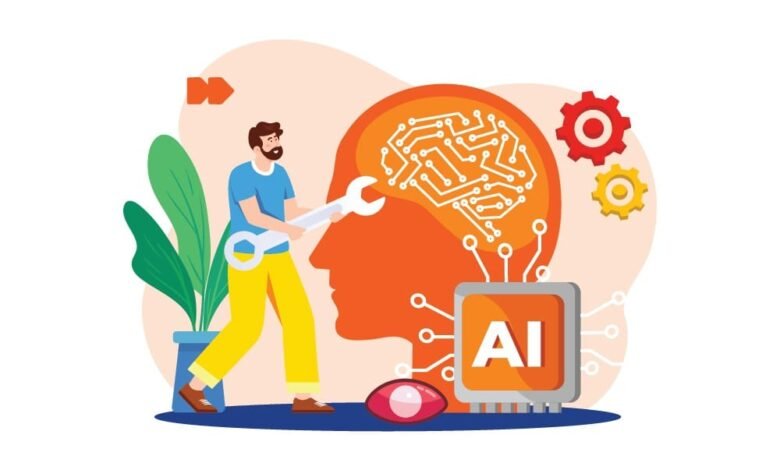The Future of Agentic LLMs: A Beginner-Friendly Guide to Concepts, Agentic Language, and Building Smarter AI Applications

If you’ve been keeping up with the fast-evolving world of artificial intelligence, you’ve probably stumbled upon the buzz around large language models (LLMs). But recently, there’s a twist that’s catching everyone’s eye: agentic LLMs. These models don’t just spit out text — they act, plan, and even reason like tiny digital assistants with a mind of their own (well, sort of).
In this post, I’m breaking down what an agentic LLM really is, why it matters, and how you — yes, you — can think about applying it to build smarter, more adaptive applications. I’ll keep it real, skip the hype, and show you how agentic language is changing the AI game, one decision at a time.
1. So, What’s an Agentic LLM, Anyway?
A classic LLM, like ChatGPT or Gemini, is basically a mega-powered text predictor. Give it a prompt, and it generates a response. It’s impressive, but passive.
An agentic LLM flips that script. It’s designed not just to respond, but to act. Think of it as an LLM with a to-do list, some short-term memory, and basic goal awareness. It can plan multi-step tasks, decide which tools to use (like a calculator or a search engine), and adjust its actions based on feedback.
In plain speak:
- Classic LLM = Word wizard.
- Agentic LLM = Mini digital agent.
This “agency” lets developers design systems that don’t need a human poking them every few seconds. Once you tell it the goal, it figures out the rest — or at least tries to.
2. Why Does Agency Matter?
Here’s why people (and companies) are excited:
- Fewer babysitting chores: Instead of writing endless prompts, you set a goal and the agent handles the steps.
- More human-like workflows: It can switch tools, search, summarize, compare — just like you would.
- Adaptability: If the situation changes, it can adjust on the fly.
In other words, agentic LLMs bridge the gap between static chatbots and true digital assistants that do stuff for you.
3. Agentic Language: The Secret Sauce
You might hear people throw around the term agentic language. Simply put, this means designing prompts, instructions, and conversation patterns so the LLM understands its role as an agent, not just a passive responder.
Agentic language is like giving clear job instructions to an intern:
✅ What’s the goal?
✅ What tools can you use?
✅ How should you handle errors?
✅ When do you ask for help?
Crafting your prompts and system instructions with agentic language is half the battle when developing agentic LLMs that don’t drift off-task or hallucinate too much.
4. Real-Life Uses: From Chatbots to Multi-Task Workers
Let’s bring it down to earth with some examples:
a) Smart Customer Support
Instead of just replying with FAQ answers, an agentic LLM can:
- Pull up a customer’s order info,
- Cancel or modify an order,
- Escalate to a human if it gets stuck,
- Record the chat for future training.
All without an operator watching every step.
b) Personal Research Assistants
Imagine telling your agent: “Find me the top three books about Stoicism, compare reviews, and draft a reading plan for the next month.”
A regular LLM might dump a list of books. An agentic LLM will:
- Search multiple sites,
- Filter based on up-to-date reviews,
- Create a plan in a format you like (Google Calendar, Notion, etc.).
c) Business Automation
Companies can plug agentic LLMs into tools like spreadsheets, CRMs, or project trackers. For example:
- Monitor team updates,
- Generate progress reports,
- Flag anomalies,
- Ping the right people — no micromanaging needed.
The AI Index 2025 report highlights the significant impact of artificial intelligence on business automation, particularly in sectors like customer support and finance. For instance, JPMorgan Chase has leveraged AI to reduce consumer banking servicing costs by nearly 30% and enhance customer engagement by 25% . Similarly, EXL’s AI-driven solutions have led to up to 21% revenue increases and 20% cost reductions for clients across various industries . In the financial sector, AI adoption has resulted in operational cost reductions of up to 22% by 2030.
5. How to Build with Agentic LLMs: A Developer’s Starter Pack
Okay, now for the meat: how do you actually create something with this? Here’s a straightforward roadmap.
Step 1: Pick the Right LLM
When selecting an LLM, it’s important to evaluate both the model’s capabilities and how well they align with the specific use cases you have in mind.Some models are better suited for agentic workflows. Look for ones that can:
- Call APIs,
- Access plug-ins or external tools,
- Store short-term memory (like a scratchpad).
Examples include OpenAI’s GPT with function calling, Google’s Gemini Agents, or Anthropic’s Claude with tool use.
Step 2: Define the Agent’s Job
Be clear. What do you want it to do on its own? For example:
- Research + Summarize?
- Book appointments?
- Analyze financial data?
Write this down in plain English — you’ll turn it into system prompts later.
Step 3: Design with Agentic Language
Remember: clear instructions! Tell the LLM:
- Its role: “You are a travel booking assistant.”
- Allowed actions: “You can search flights, compare prices, and confirm bookings.”
- Rules: “Always ask for confirmation before spending money.”
This simple agentic language reduces surprises.
Step 4: Plug In the Right Tools
Most agentic LLMs work best when connected to tools:
- APIs (for live data)
- Databases (for context)
- Calculators or code runners (for math or logic)
Many frameworks make this easy — LangChain, Semantic Kernel, or custom plug-ins.
Step 5: Test Like Crazy
Run simulations. What does it do if:
- Data is missing?
- The API fails?
- The user changes the goal halfway through?
Agents are only as smart as their instructions and error handling.
6. Common Pitfalls (And How to Dodge Them)
A little reality check, because I’m not here to sugarcoat it:
🚫 Overtrusting the Agent:
They will hallucinate or do weird things. Always have safety checks.
🚫 Unclear Prompts:
If your instructions are vague, expect chaos. Be crystal clear.
🚫 Lack of Guardrails:
Set limits on what actions an agent can take. For example, don’t let it randomly delete files or spend real money unsupervised.
IBM’s AI Ethics page outlines their commitment to responsible AI through principles emphasizing transparency and accountability. These guidelines ensure that AI systems are explainable, fair, and secure, fostering trust among users and stakeholders. IBM’s approach includes clear documentation of AI development processes and adherence to ethical standards, promoting responsible innovation.
7. Future of Agentic LLMs: What’s Next?
LLMs are improving at grasping prompts, and the future of agentic LLMs will make this even smoother, leading to simpler prompt engineering and more user-friendly interactions.The next few years will see agentic LLMs:
- Becoming standard in everyday apps, from email to shopping.
- Getting better “memory” so they remember long-term goals.
- Working in teams — one agent handles research, another writes reports, a third checks accuracy.
In short, your future co-worker might just be an agentic LLM that never asks for coffee breaks.
8. Wrapping Up
Agentic LLMs represent the next logical step in AI’s evolution: from passive chatbots to dynamic helpers that can plan, decide, and do. Mastering this isn’t about writing fancy code — it’s about understanding how to design clear goals, give the right tools, and communicate using strong agentic language.
If you’re a developer, product manager, or just a curious mind, now’s the perfect time to experiment. Play with open-source frameworks. Connect an LLM to your favorite tools. See what it can automate for you.
One thing’s for sure: we’re only scratching the surface of what these digital agents can achieve.





